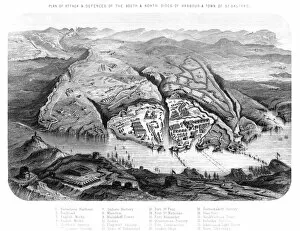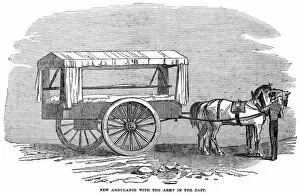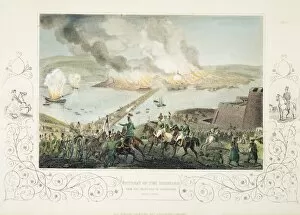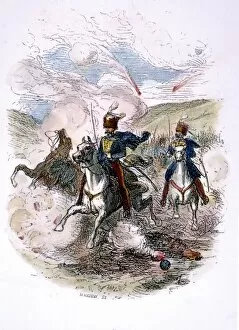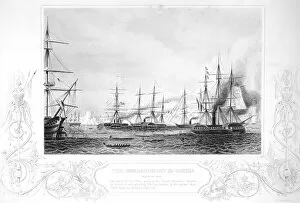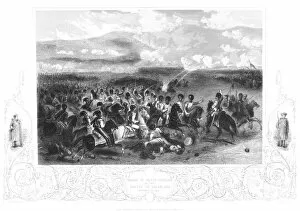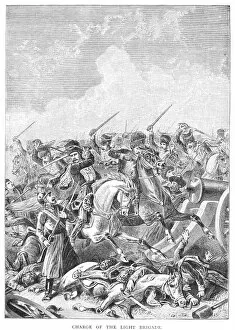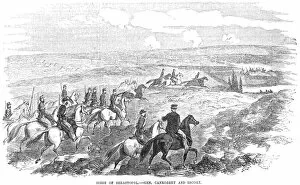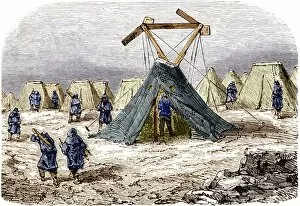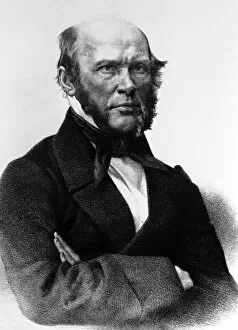Crimean War Collection (page 57)
"The Crimean War: A Glimpse into the Valley of Death and Heroism" In the annals of history
For sale as Licensed Images
Choose your image, Select your licence and Download the media
"The Crimean War: A Glimpse into the Valley of Death and Heroism" In the annals of history, one event stands out as a symbol of bravery and tragedy – the Charge of the Light Brigade. On that fateful day, 25th October 1854, amidst the chaos and carnage of war, a group of British cavalrymen rode valiantly towards their destiny at Balaclava. The Argyll & Sutherland Highlanders formed The Thin Red Line, an unwavering defense against enemy forces. Their resolute stance became legendary in this battle-scarred landscape. In Lord Alfred Tennyson's poem "Charge of the Light Brigade, " he immortalized their heroism for generations to come. As wood engravings from a bygone era depict, it was indeed a sight to behold – The Charge of the British Light Cavalry Brigade thundering across Balaklava. With courage in their hearts and swords raised high, they charged headlong into danger without hesitation or fear. The Valley of Death loomed before them like an abyss filled with uncertainty. Yet these brave soldiers pressed on relentlessly through its treacherous terrain. It was here that Florence Nightingale emerged as a beacon of hope amidst despair; her lamp guiding injured soldiers towards salvation. Maps from 1855 reveal the vast theater where this conflict unfolded – Crimea became synonymous with bloodshed and sacrifice. Artists like Hayes captured poignant moments such as The Charge during Battle at Balaclava - horses galloping fiercely while bullets whizzed past them. Amongst all this chaos stood The Black Watch - Forward. The 42nd. They fought gallantly at Alma, etching their name in history alongside other heroes who faced death with unwavering resolve. The Crimean War left an indelible mark on humanity's collective memory - tales abound about valor displayed under impossible circumstances.



